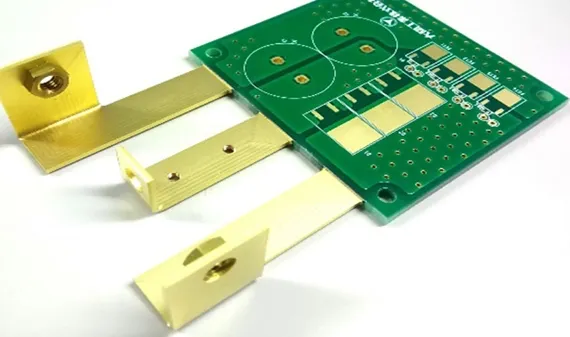Bare copper busbar has increasingly been used in high-power applications such as energy storage systems, electric vehicle battery packs, renewable energy power distribution, and âPCB interconnectsâ for high-current circuits. In this blog, we will show you the definition, features, types, price, and application of the bare copper busbar.
Have you faced below complicated technical problems?
- Difficult connection and bonding issues?
- Complexity about processing and manufacturing?
- Limitations about size and specification?
- Potential problem with material and performance?
The particular solutions for the above problems are as follows.
- Enhance connection process: Using innovative connection technique and employing superior quality connection material.
- Boost manufacturing process: Adopting automation equipment and making tailored manufacturing solutions.
- Upgrade material and design: Selecting the proper material and perfecting the design.
- Providing technical support and service.
Bare copper busbar plays a vital role in modern electrical systems. It has diverse applications, including âenergy storage systemsâ, electric vehicle (EV) battery packsâ, renewable energy power distribution, high current PCBs, and other uses. We are the source factory of bus bar PCBs. If you need any bus bar PCB for a specific application, just make contact with us at any moment via sales@bestpcbs.com.

What is Bare Copper Busbar?
A bare copper busbar is a solid strip of copper designed for electrical distribution. It conducts high current with minimal resistance. Due to its natural conductivity and durability, it is often the first choice in both industrial and electronic projects.

What are the Features of Electrical Copper Bus Bar?
The electrical copper bus bar offers high conductivity, strong mechanical strength, and excellent thermal stability. It supports high current loads without overheating. Its surface is smooth and easy to shape, which simplifies installation. Moreover, it can be customized into different thicknesses and sizes based on project requirements.
What are the Types of Bare Copper Busbar?
There are several types of bare copper busbars:
- Flat Copper Busbar: Used for compact electrical assemblies.
- Round Copper Busbar: Suitable for grounding and flexible routing.
- Solid Copper Busbar: Designed for high mechanical stability and long service life.
- Punched or Stamped Copper Busbar:Â Customized for specific circuit or PCB needs.
Where can a Bare Copper Busbar be Installed?
Bare copper busbars are installed in switchgear, panel boards, power converters, and PCBs. They are also common in automotive, aerospace, and renewable energy systems. Thanks to their reliability, they serve as the backbone of both heavy power distribution and delicate circuit layouts.
How is the Copper Busbar Price?
The price of copper busbars depends on factors like copper market trends, busbar size, and customization level. Bare copper busbar price is usually higher than aluminum, but it offers better conductivity and durability. Many customers struggle with unclear quotations. Best Technology provides transparent pricing with detailed cost breakdowns to avoid hidden charges and build trust.
What are Copper Busbar Uses?
Copper busbar uses are wide-ranging. They conduct power in substations, distribute current in industrial plants, and provide grounding in sensitive electronics. In renewable energy, they connect solar inverters and wind turbines. In automotive and aerospace fields, they handle compact yet high-power systems. Their adaptability makes them a must-have in almost every electrical sector.
What Kind of PCBs will use Bare Copper Busbar?
High-current PCBs often require copper busbar integration. These include inverter boards, automotive control modules, and power supply units. By embedding busbars, engineers improve thermal management and reduce voltage drop. Best Technology specializes in producing PCB assemblies with embedded copper busbars, solving heat dissipation and current load challenges.
What are the Pros and Cons of Solid Copper Busbar?
Pros: Solid copper busbars offer high conductivity, excellent thermal stability, and long service life. They also resist corrosion and maintain performance under high loads.
Cons: The main drawback is higher cost compared to aluminum busbars. However, for long-term reliability and reduced maintenance, copper remains the preferred choice.

All in all, knowing the practical information about bare copper busbars will benefit âengineers and manufacturers in optimizing high-current electrical projects and improving efficiency in power distribution applicationsâ. If you need any bus bar PCB pricing, pls get in contact with us directly at sales@bestpcbs.com.


